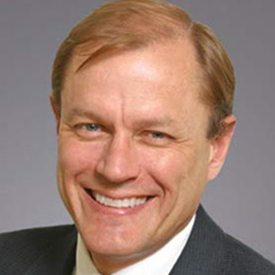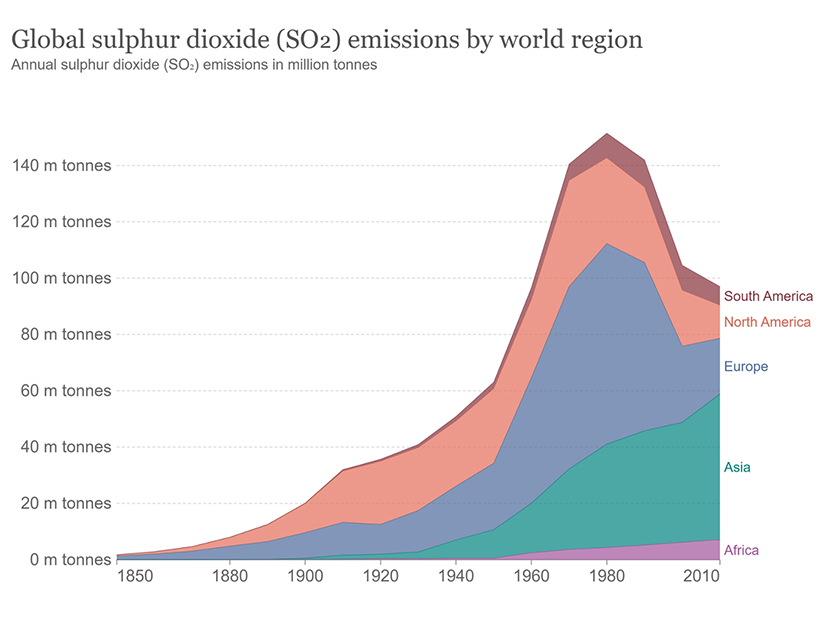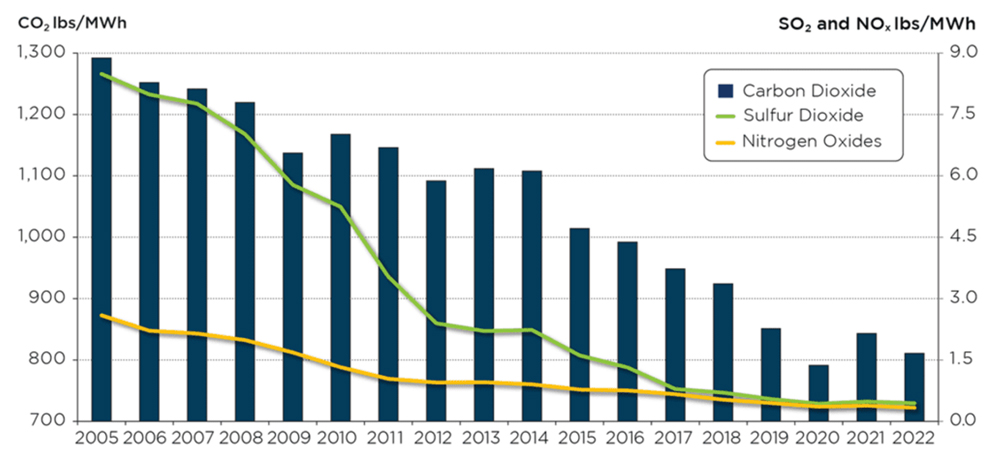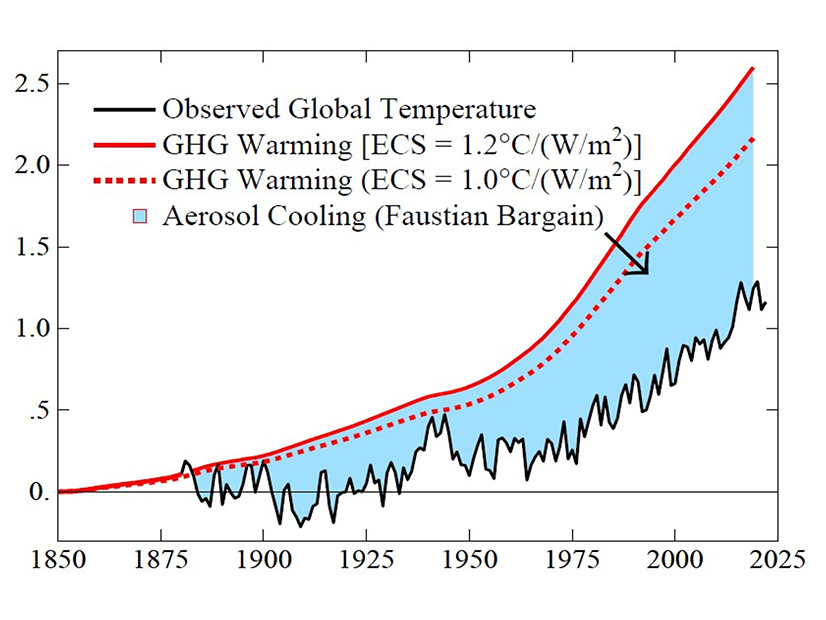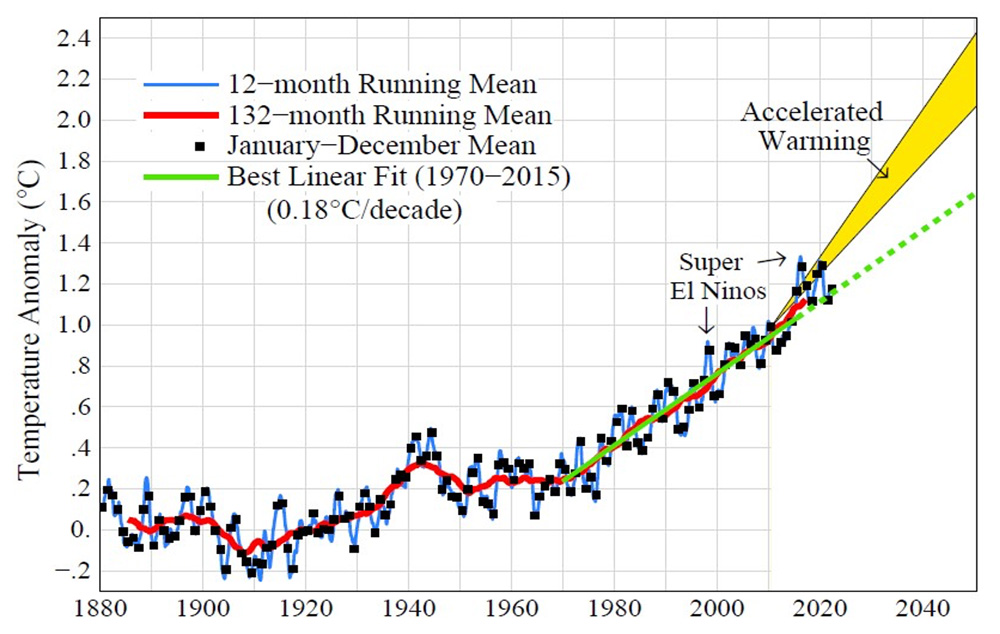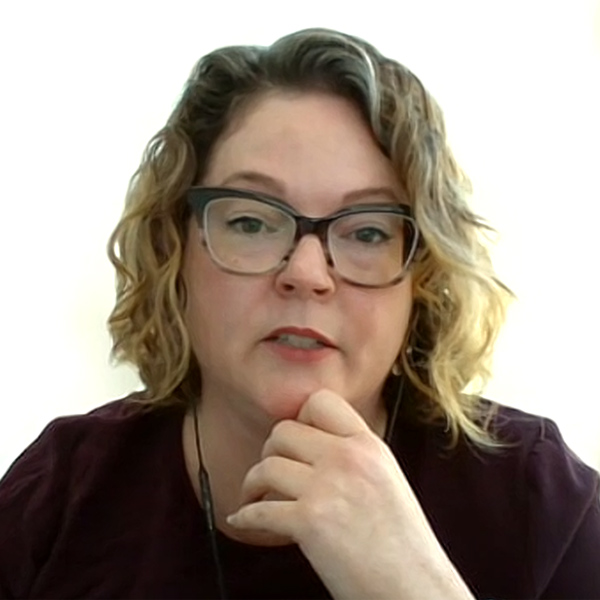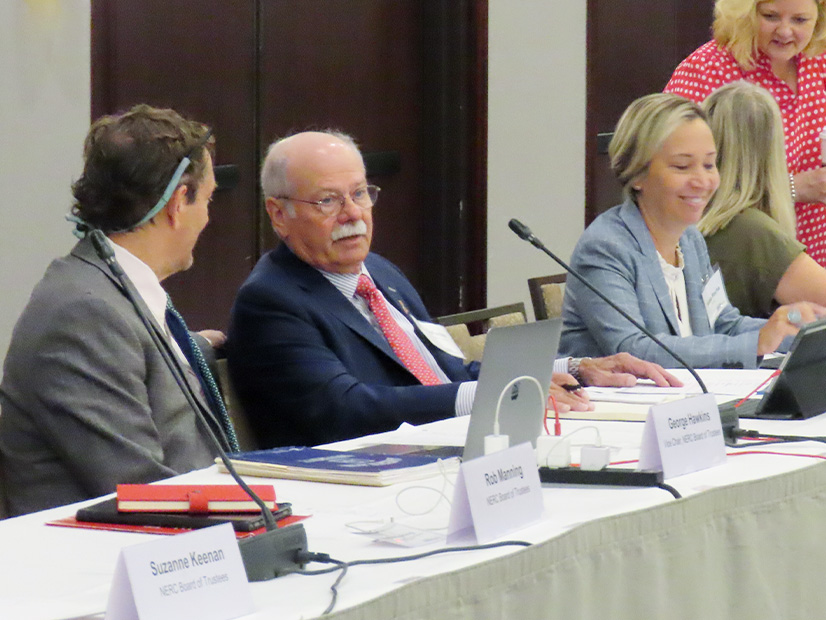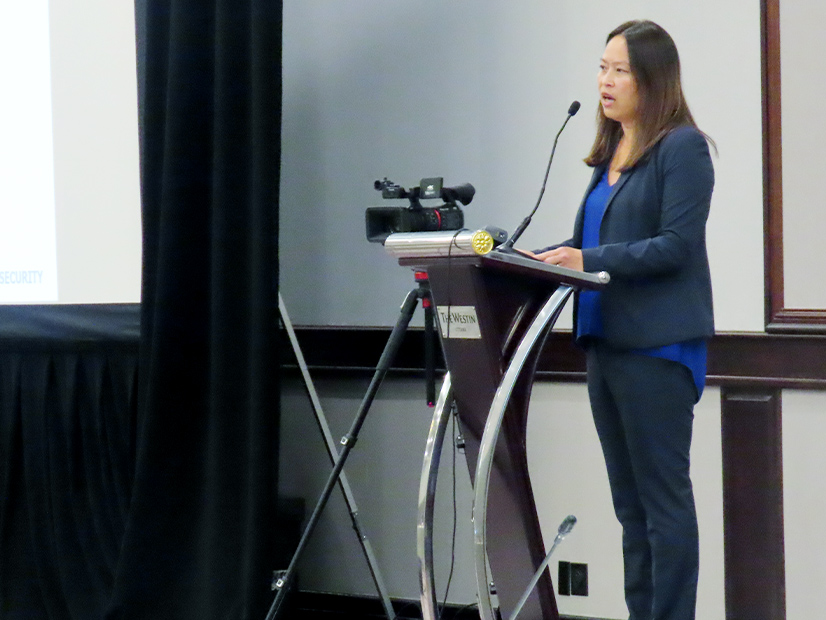Do you remember reading a couple years ago that the worldwide reduction in aerosol emissions[1] would likely double the rate of global warming from what it’s been for the past 50 years?
No? Neither do I.
But there it was in Inside Climate News in September 2021.[2] James Hansen, the Paul Revere of global warming since 1988, had a heretical warning. Aerosols have a climate cooling effect, and the reduction in aerosols is accelerating global warming. The headline wasn’t cryptic: “The Rate of Global Warming During Next 25 Years Could Be Double What it Was in the Previous 50, a Renowned Climate Scientist Warns.”[3]
If you thought this warning of existential threat would have garnered worldwide media attention, you would be wrong. Instead, crickets.
This Summer
So here we are, two years later, setting new heat records. The aerosol cooling effect is diminishing relative to the warming effect of greenhouse gases.
Not that the reduction in aerosols like sulfur dioxide didn’t have a benefit. Aerosols are air pollutants estimated to kill several million people worldwide every year (although there are sources of aerosols other than fossil fuel combustion).[4]
But what we didn’t recognize was the double-edged sword: These same aerosols have been offsetting a lot of the warming effect of GHGs.
What’s Going On
Please take a look at these charts of global carbon dioxide emissions and global sulfur dioxide emissions.[5] See the difference?
The difference in change between carbon dioxide and aerosol emissions is even more dramatic in places like PJM, as shown by this chart where the left axis is carbon dioxide and the right axis is aerosol emissions:[6]
As PJM summarizes: “From 2005 to 2022, carbon dioxide emission rates fell 37% across PJM’s footprint; emission rates for nitrogen oxides are down 87% and sulfur dioxide 95%.” Thus, carbon dioxide emissions have fallen less than half as much as aerosol emissions.
No Good Deed Goes Unpunished
The cooling effect isn’t small. Hansen and his colleagues think the cumulative cooling effect of aerosols has been offsetting about half the cumulative warming effect of GHGs, as this chart from their recent study shows:[7]
If you compare the red lines based on expected warming from paleoclimate and other records with actual warming, there is about a 1- to 1.5-degree Celsius gap in 2022. Hansen and his team attribute the gap to the cooling effect of aerosols.
Recent research, analyzing COVID-19 pandemic period data, suggests this even understates the relative effects of GHGs and aerosols on global warming.[8]
The most recent Intergovernmental Panel on Climate Change (IPCC) report does estimate an offsetting effect of aerosols, but it pegs the offset at only a quarter of the otherwise warming effect of GHGs.[9] As the prior chart suggests, Hansen and his colleagues think the IPCC has greatly understated the aerosol effect: “Aerosol climate forcing is larger than the recent (AR6) IPCC estimate. Aerosols probably provided a significant climate forcing prior to the Industrial Revolution. We know of no other persuasive explanation for the absence of significant global warming during the past 6,000 years, a period in which the GHG forcing increased 0.5 W/m2. Climate models that do not incorporate a growing negative aerosol forcing yield significant warming in that period, a warming that, in fact, did not occur.”[10]
So between Hansen’s team and the IPCC — as Clint Eastwood might ask — do you feel lucky?
Wait, It’s Worse Than That
Aerosols have a relatively short duration in the atmosphere (weeks), while GHGs have a relatively long duration (decades). As fossil fuel generation continues to be reduced, the presence of cooling aerosols drops off rapidly while the presence of GHGs continues for decades. So the cooling effect dissipates rapidly while the heating effect persists. As a recent study says: “A complete phaseout of today’s fossil fuel combustion to zero-emission renewables would result in rapid aerosol demasking, while the GHGs linger on.”[11]
Hansen’s team projects that the rate of global warming post-2010 has been and will be at least 50% greater than the prior 40-year rate: “Decline of aerosol emissions since 2010 should increase the 1970-2010 global warming rate of 0.18 C per decade to a post-2010 rate of at least 0.27 C per decade.”[12]
Here’s a chart depicting this dire future:[13]
So this summer’s heat waves should have come as no surprise.
Wait, It’s Even Worse Than That
Hansen’s other heretical warning — also largely ignored by major media — is that the conventional scientific wisdom has greatly overstated the time lag between rising temperatures and rising seas. That wisdom is based on models showing gradual sea rise over many centuries. The IPCC’s various emission scenarios project sea level rise of no more than 1 meter by 2100.[14]
Hansen and colleagues say we need to pay more attention to the paleoclimate record revealing a past in which sea levels rose rapidly, with the prospect for several meters of sea rise over the next 50 to 150 years.[15] There’s also conforming evidence from a Greenland ice core as revealed in a new study.[16]
Not to minimize other consequences of a hotter climate over the decades to come, but this is the threat of entire coastal cities disappearing. Three hundred twenty million people live less than 5 meters above sea level.[17]
This isn’t about adaptation; this is the end of the world as we know it. And no, to riff on R.E.M.,[18] I don’t feel fine.
Now What?
The response by most climatologists appears to be two-fold: (1) reducing aerosols is worth it because the reduced air pollution saves lives, and (2) even if Hansen and colleagues are right, it just means we need to do more to decarbonize faster rather than distract from that mission.
Re. response 1: Yes, aerosols are a form of air pollution that causes several million deaths per year. But that doesn’t explain why non-toxic aerosols like sand can’t replace toxic aerosols as discussed more below.
Re. response 2: Worldwide decarbonization isn’t going to happen any time soon, if ever.[19] The “A” in Plan A could stand for “Ain’t happening.” I’ve discussed the prospect, or lack thereof, of worldwide decarbonization before, with references to that and othering sobering news in the footnote.[20] And here’s a recent data point from Pew Research: Only 31% of Americans support a full phaseout of fossil fuels[21]; you can imagine what that number is for the rest of the world.
And it’s probably too late for Plan A anyway. Hansen offers this somber reality (buried in a paragraph on page 45 of the recent study): “Phasedown of emissions cannot restore Earth’s energy balance within less than several decades, which is too slow to prevent grievous escalation of climate impacts and probably too slow to avoid locking in loss of the West Antarctic ice sheet and sea level rise of several meters.”
It’s baked in, figuratively and literally.[22]
Plan B
As I wrote last year, we need a Plan B: putting aerosols back into the atmosphere,[23] at least to get back to the cooling effect we’ve had before, and to buy us time for decarbonization to occur and to be impactful.
The best candidate may be non-toxic sand added to the stratosphere (with longer duration than the short-duration aerosols in our close-in troposphere).
This isn’t just neophyte Steve Huntoon talking. This is Hansen talking: “A promising approach to overcome humanity’s harmful geo-transformation of Earth is temporary solar radiation management (SRM). … An example of SRM is injection of atmospheric aerosols at high southern latitudes, which global simulations suggest would cool the Southern Ocean at depth and limit melting of Antarctic ice shelves.”[24]
To climate purists who reject this as humans messing with the environment, what do they think we humans have been doing for millennia? We need to focus on what’s best for our species, our children and their children.
And to the objection that the world’s nations wouldn’t agree on what specific geoengineering should be done, is it more likely that there will be worldwide agreement on rapid elimination of GHGs and who pays for it, assuming the requisite technologies even exist at feasible cost? As Aerosmith said, dream on.[25]
Isn’t It Ironic
It’s ironic that what we thought was an unadulterated good — reducing aerosol emissions — has a dark side. I’ll give Alanis Morissette the last word about what we might (or might not) do about it:[26]
It’s the good advice that you just didn’t take
And who would’ve thought … it figures.
Columnist Steve Huntoon, principal of Energy Counsel LLP, and a former president of the Energy Bar Association, has been practicing energy law for more than 30 years.
[1] Principally sulfur dioxide (SO2) and nitrogen oxides (NOx) — the latter of which is not to be confused with nitrous oxide (N2O), which is a greenhouse gas.
[2] https://insideclimatenews.org/news/15092021/global-warming-james-hansen-aerosols/.
[3] The net cooling effect of aerosols has been known for some time, as reported by Scientific American in 2018, https://www.scientificamerican.com/article/cleaning-up-air-pollution-may-strengthen-global-warming/, but the Hansen warning was specific in magnitude and timing of impact.
[4] https://www.who.int/en/news-room/fact-sheets/detail/ambient-(outdoor)-air-quality-and-health; https://www.washingtonpost.com/business/energy/2023/03/27/climate-change-how-cleaning-up-pollution-may-heat-the-planet/dd7496b0-ccdc-11ed-8907-156f0390d081_story.html.
[5] https://ourworldindata.org/co2-emissions (setting start year at 1850 to track with SO2 chart); https://ourworldindata.org/grapher/so-emissions-by-world-region-in-million-tonnes.
[6] https://insidelines.pjm.com/annual-study-shows-decrease-in-average-emission-rates-for-pjm-footprint/.
[7] https://arxiv.org/ftp/arxiv/papers/2212/2212.04474.pdf, Figure 13.
[8] https://www.nature.com/articles/s41612-023-00367-6.pdf.
[9] https://www.ipcc.ch/report/ar6/syr/downloads/report/IPCC_AR6_SYR_FullVolume.pdf, page 43, comparing 1.5 C of GHG warming effect with 0.4 degrees of offsetting principally aerosol cooling effect.
[10] https://arxiv.org/ftp/arxiv/papers/2212/2212.04474.pdf, page 39.
[11] https://www.nature.com/articles/s41612-023-00367-6.pdf.
[12] https://arxiv.org/ftp/arxiv/papers/2212/2212.04474.pdf, page 1.
[13] https://arxiv.org/ftp/arxiv/papers/2212/2212.04474.pdf, Figure 25.
[14] https://www.ipcc.ch/report/ar6/syr/downloads/report/IPCC_AR6_SYR_LongerReport.pdf, page 45.
[15] https://acp.copernicus.org/articles/16/3761/2016/acp-16-3761-2016.pdf.
[16] https://www.cnn.com/2023/07/20/world/greenland-ice-sheet-melt-sea-level-rise-climate/index.html; https://www.nytimes.com/2023/07/21/science/climate-greenland-ice-sheet.html.
[17] That’s 4.1% of the world’s population of 7.9 billion. https://data.worldbank.org/indicator/EN.POP.EL5M.ZS. Six hundred million live less than 10 meters above sea level. https://www.un.org/sustainabledevelopment/wp-content/uploads/2017/05/Ocean-fact-sheet-package.pdf.
[18] https://www.youtube.com/watch?v=wa43FNUdpU8.
[19] https://energy-counsel.com/wp-content/uploads/2022/05/We-are-Going-to-Need-a-Plan-B-RTO-Insider-5-10-22.pdf. And the prospects aren’t improving in terms of international collaboration and funding, https://www.reuters.com/business/environment/bonn-climate-talks-prepare-cop28-summit-end-with-little-show-2023-06-16/ or in resources like offshore wind, https://www.wsj.com/articles/wind-industry-hits-rough-seas-as-problems-mount-5490403a?mod=Searchresults_pos1&page=1, and long-duration storage, https://www.canarymedia.com/articles/long-duration-energy-storage/is-azelios-abrupt-bankruptcy-a-bad-omen-for-long-duration-energy-storage.
[20] Response 2 also evokes the punchline to that joke about economists: assume a can opener.
[21] https://www.pewresearch.org/science/2023/06/28/majorities-of-americans-prioritize-renewable-energy-back-steps-to-address-climate-change/.
[22] For more on this, https://arxiv.org/ftp/arxiv/papers/2212/2212.04474.pdf, Figure 28 and pages 42-43.
[23] https://energy-counsel.com/wp-content/uploads/2022/05/We-are-Going-to-Need-a-Plan-B-RTO-Insider-5-10-22.pdf.
[24] https://arxiv.org/ftp/arxiv/papers/2212/2212.04474.pdf, page 46.
